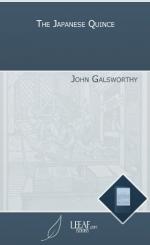|
This section contains 346 words (approx. 1 page at 400 words per page) |

|
The story is told from the perspective of a third person omniscient narrator that means that the reader is privy to the thoughts and motivations of the main character, without that character revealing them himself. By the author's use of this perspective, the reader understands Mr. Nilson's flood of feelings about the spring morning, as well as his discomfort around Mr. Tandram. A basic third person narrator would be able to comment on the actions and descriptions of the scene, not the internal thoughts and emotions.
The blackbird plays an important role because of its mystical symbolism of both fear and promise. The blackbird lures both men to the Japanese Quince tree to revel in its beauty, but the presence of the other man is uncomfortable for both. They fear the proximity and the intimate setting.
It is interesting to note that Mr. Tandram, whose...
(read more from the Analysis Summary)
|
This section contains 346 words (approx. 1 page at 400 words per page) |

|




